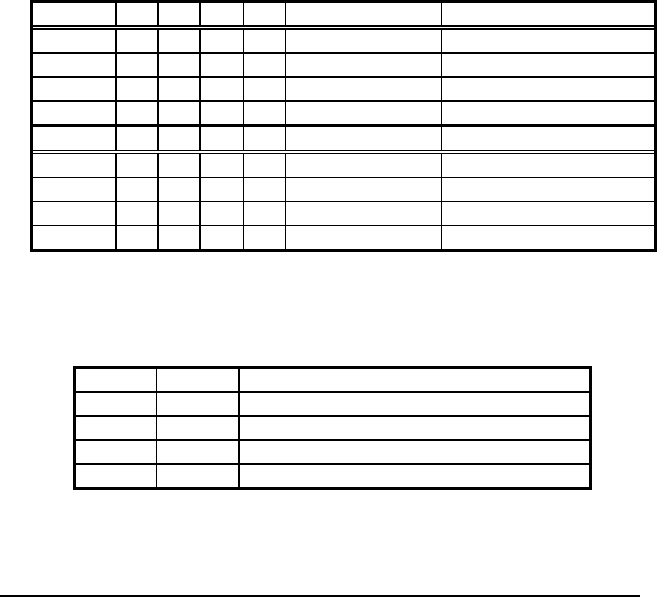
28 • Operation Theorem
4.3.4 Interrupt Source Control
In ISC register (offset 0x20), there are four bits to control the IRQ sources of
INT1 and INT2.
If the application need only one IRQ, you can disable one of the IRQ
sources by software. If your application doesn't need any IRQ source, you
can disable both interrupts. However, the PCI BIOS still assigns an IRQ level
to the PCI card and occupies the PC resource if you only disable the IRQ
sources without changing the i nitial condition of the PCI controller.
It is not recommended to change the initial condition of the PCI card through
a user's own application software. If users want to disable the IRQ level,
they can use the utility "util DIO 48H.exe" or "util DIO 96H.exe to change
the power on an interrupt setting.
The table 4.3 shows the register format of the ISC (address offset 0x20).
This register is write only. The 4 LSBs are used to control the source of
INT1 and INT2.
INT1 D3
D2
D1
D0
IRQ Sources IRQ Trigger Condition
Disable
X X 0 0 INT1 disable --
Mode 1 X X 0 1 ~P1C0 falling edge of P1C0
Mode 2 X X 1 0 P1C0 OR ~P1C3 (see following)
Mode 3 X X 1 1 Event Counter Counter count down to 0
INT2 D3
D2
D1
D0
IRQ Sources IRQ Trigger Condition
Disable
0 0 X X INT2 disable --
Mode 1 0 1 X X ~P2C0 falling edge of P2C0(*)
Mode 2 1 0 X X P2C0 OR ~P2C3 (see following) (*)
Mode 3 1 1 X X Timer Output Timer count down to 0
Table 4.3 ISC register format
(*) Note: Not available on PCIDIO 24H.
Then the IRQ sources is set as “P1C0 OR ~P1C3”, the IRQ trigger
conditions are summarized in table 4.4.
P1/2C0
P1/2C3
IRQ Trigger Condition
High X PC0=‘H’ disable all IRQ
X Low PC3=‘L’ disable all IRQ
Low 1->0 PC3 falling edge trigger when PC0=L
0->1 High PC0 rising edge trigger when PC3=H
Table 4.4 IRQ Trigger conditions
Because the P1/P2C0 and P1/P2C3 are external signals, the users can
utilize the combination of the four signals to generate a proper IRQ.


















